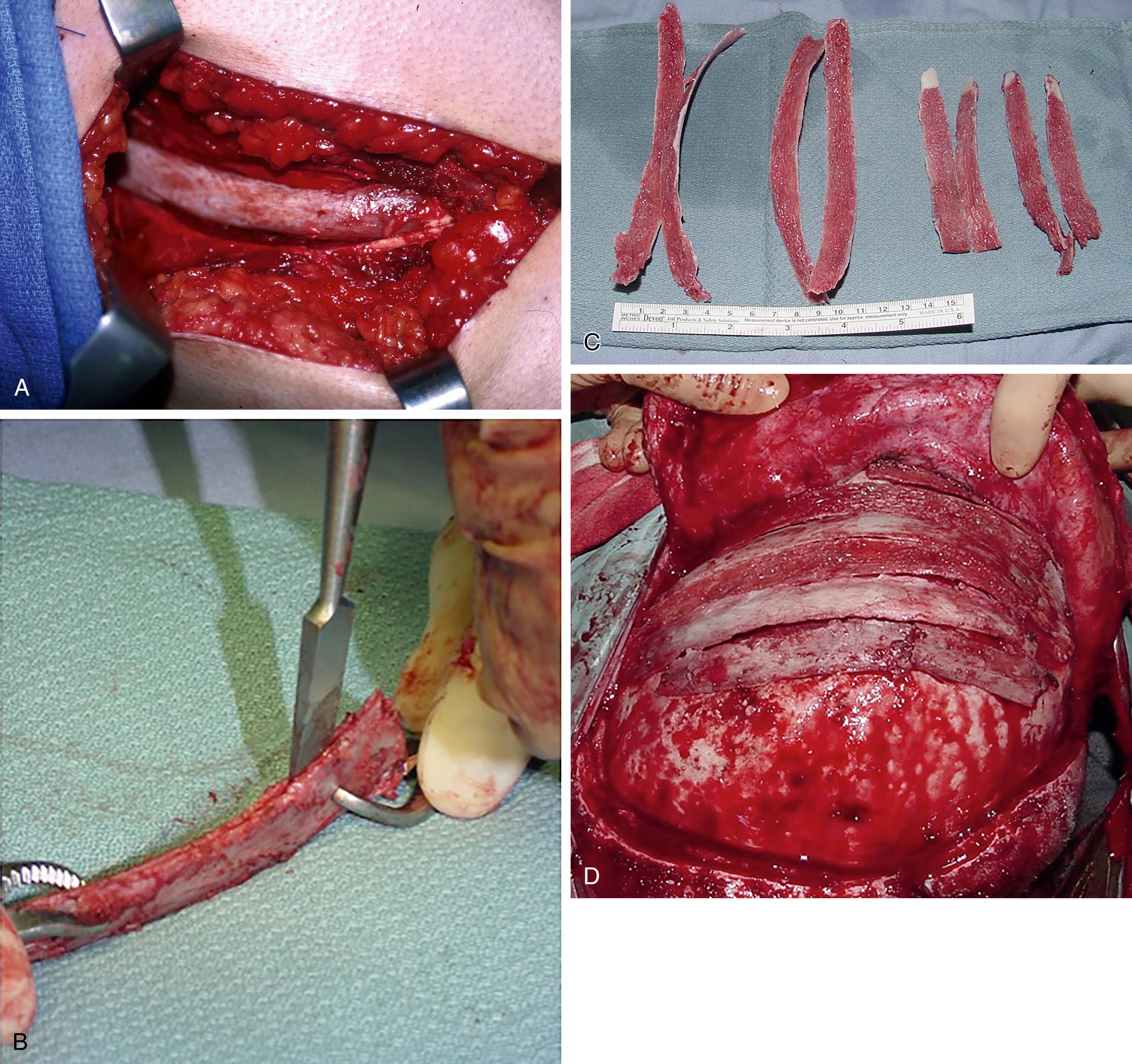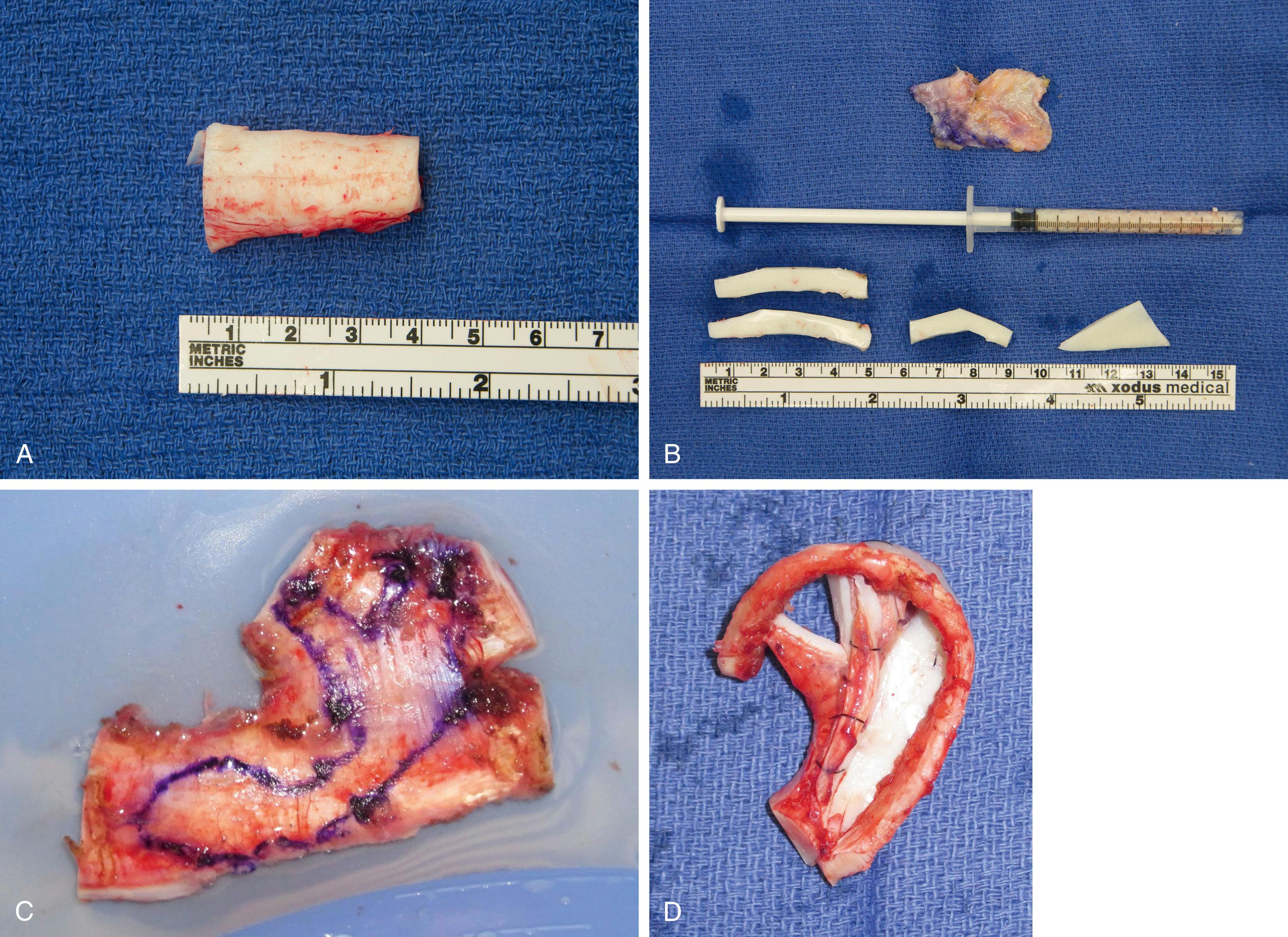Physical Address
304 North Cardinal St.
Dorchester Center, MA 02124
Rib graft is a useful adjunct for the reconstruction of the craniofacial skeleton and can be harvested in multiple forms to fit different situations. Rib graft may be harvested as a long, pliable bone graft. This is commonly used for mandibular reconstruction. It may also be used to reconstruct the bony buttresses of the face after trauma or tumor resection. Rib bone can be split longitudinally through the thin medullary canal using an osteotome. Split rib graft is useful for reconstructing calvarial defects and defects of the midface, such as the orbital floor, where a thin autologous bone graft is ideal.
The ribs are also a source of abundant cartilage for reconstruction of the nose, ears, and trachea. Costal cartilage from the ribs is the most common source of donor material for reconstructing the ear in cases of microtia. In secondary rhinoplasty, rib cartilage is often a necessary adjunct for recreating the support structures of the nose because septal cartilage may be weakened or absent in these cases. Finally, ribs may be used as a composite costochondral graft containing both cartilage and bone for reconstruction of the mandibular condyle and for temporomandibular joint arthroplasty. The hyaline cartilage cap can act as a growth center in pediatric patients while withstanding the stresses of the temporomandibular joint.
Rib cartilage and bone are commonly harvested from the fifth, sixth, and seventh ribs.
To maintain thoracic stability, when more than one rib bone graft is required, harvest alternate ribs rather than two sequential ribs.
Rib bone cortex is thin and may not allow stable screw fixation. It is best fixated with wires.
Costal cartilage may be harvested as a large cartilage block from the synchondrosis of the ribs inferiorly if necessary.
After removal of the rib graft, evaluate for injury to the parietal pleura and the presence of a pneumothorax prior to closure.
Does the patient have a history of prior surgeries or rib graft harvest? This is a common situation in secondary rhinoplasty and secondary bone reconstruction. Although bone and cartilage can regenerate within the periosteal or perichondrial sleeve, the bony regenerate is thin and not of equivalent quality. In addition, performing a secondary harvest from the same site is often more difficult due to the presence of scar tissue. This may lead to an increased risk of penetrating the parietal pleura during the dissection and causing a pneumothorax. We advocate using the alternate side in these instances.
Evaluate for any prior scars on the thorax.
Evaluate the shape of the rib cage. Understand that the curvature and location of the rib may differ if the patient has a long and narrow thoracic cavity rather than a short and wide thorax.
Imaging is not necessary for rib graft harvest. However, some authors have advocated the use of limited computed tomography (CT) scan of the sternum in older patients prior to cartilage harvest. CT scan can preoperatively estimate the quality of the graft by demonstrating the degree of calcification of the costal cartilages.
Bone ( Fig. 176.1 ): Rib bone graft is useful for mandibular, orbital, and zygomatic reconstruction. It provides an abundant source of relatively pliable bone that also may be split. Split rib graft may be used for calvarial reconstruction.

Costal cartilage ( Fig. 176.2 ):
Costal cartilage can provide strong support grafts for cases of difficult primary or secondary rhinoplasty (see Fig. 176.2A and B ). It is particularly useful for columellar struts, extended spreader grafts, and dorsal grafts. However, rib cartilage grafts have shown an incidence of warping ranging from 0% to 25% in studies. An alternative is to use rib cartilage for a diced cartilage-fascia graft.
The synchondrosis of the sixth, seventh, and eighth ribs can be harvested as a cartilage block for microtia reconstruction (see Fig. 176.2C and D ). A floating rib cartilage is also used to create the helix.
Costal cartilage is also useful for laryngotracheal reconstruction in cases of laryngeal or tracheal stenosis.

Composite costochondral graft: This is most commonly used for reconstruction of the mandibular condyle and for temporomandibular joint arthroplasty.
Concomitant lung disease—Pain from rib graft harvest may lead to postoperative splinting or shallow breathing. This can increase the risk of atelectasis or pneumonia. Emphasize the importance of postoperative pulmonary toilet in all patients, and exercise caution in those with concomitant lung disease.
Routine
Become a Clinical Tree membership for Full access and enjoy Unlimited articles
If you are a member. Log in here